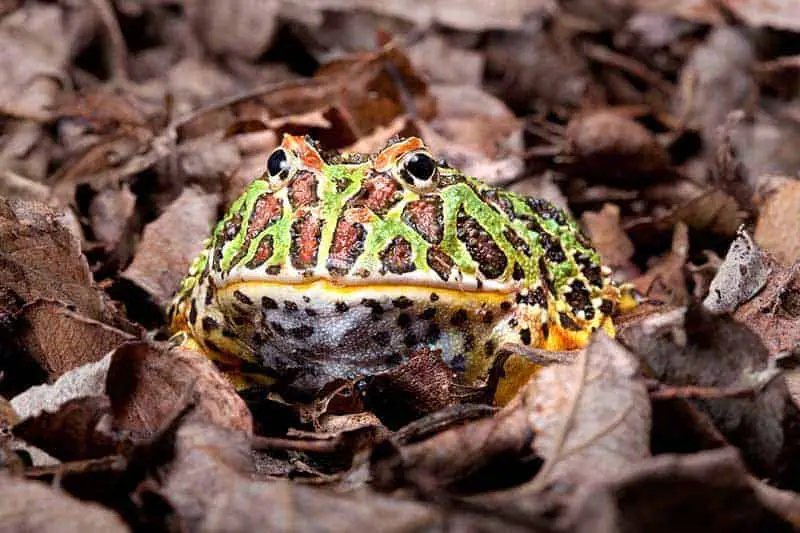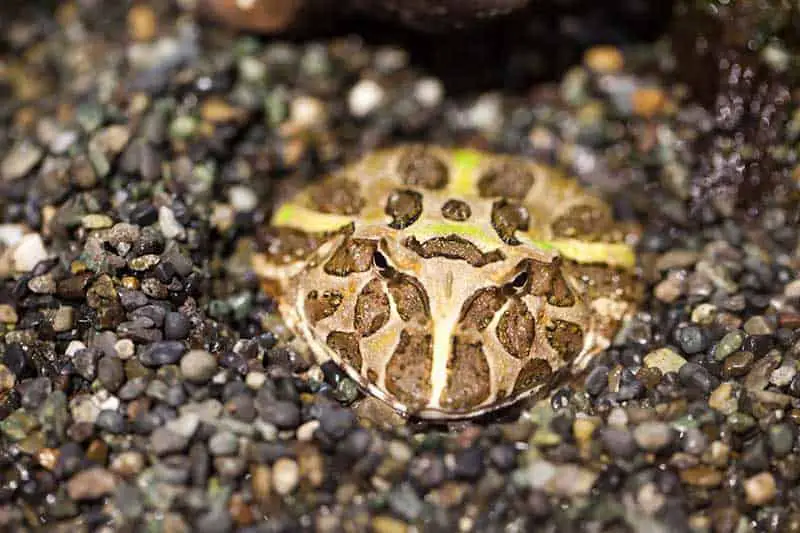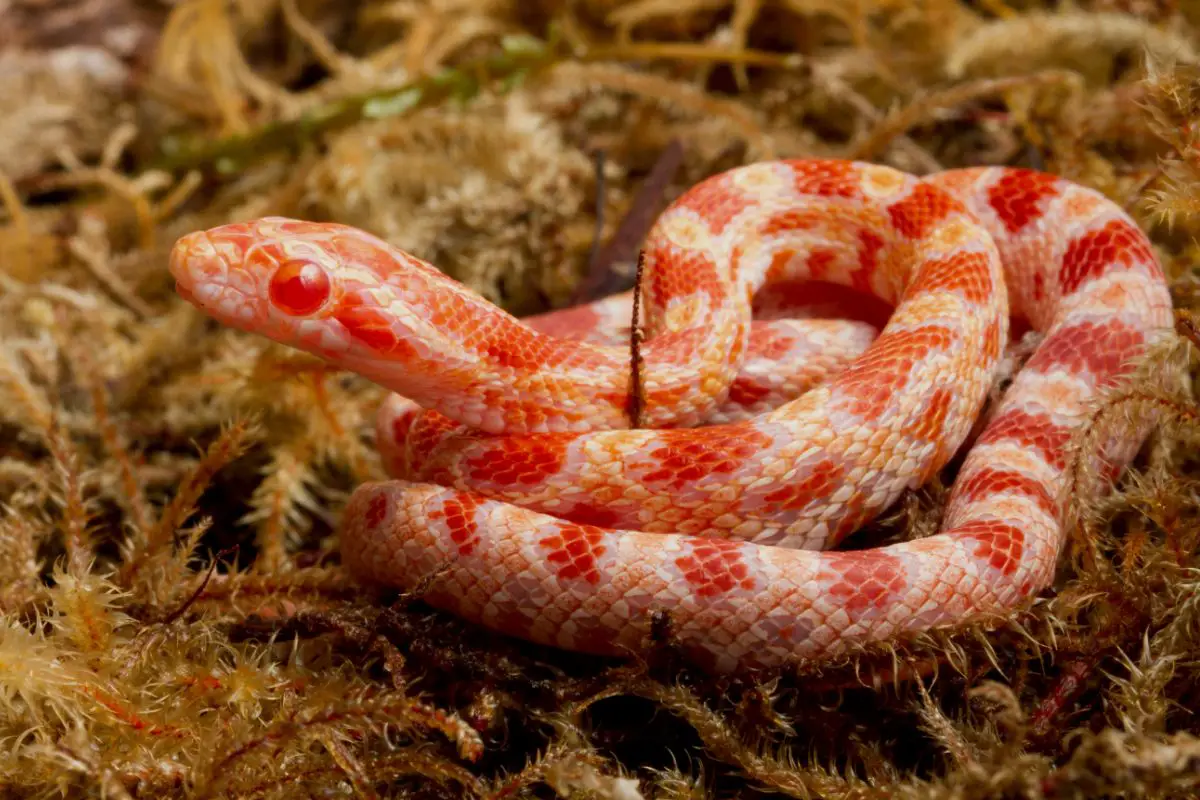With their distinctive, giant heads, big mouths, and smaller bodies, pacman frogs are hugely popular pets. There are several species of them, each with its own distinctive coloration. But as anyone with experience with pet frogs can tell you, just because an animal is a popular pet doesn’t mean it’s a good pet.
Many of the most popular exotics are actually terrible pets. Some just don’t handle captivity well, resulting in chronic health problems, while others, like parrots, are extremely high maintenance. So, the question is, are pacman frogs good pets and if so why?
Can beginners have pacman frogs as pets?
The short answer is: yes! Pacman frogs make great pets, especially for beginners to owning frogs.
The longer answer is that pacman frogs are low-maintenance pets that are fairly easy to care for and don’t require a lot of attention. These frogs are largely sedentary and entirely terrestrial. That means that their enclosure doesn’t have to be huge (even though the frogs themselves are quite large) and you don’t need to worry about providing a lot of water for them to swim in.
Pacman frogs also eat nearly anything, from insects to fish and mice. They have a voracious appetite so you never have to worry about them not eating (which is a problem with some reptiles and amphibians in captivity), and you have a lot of options when it comes to buying them food.
You shouldn’t handle your pacman frog very much- they can and will bite, and like all frogs their skin is very delicate and sensitive so handling them can be harmful to the frog. But with their striking appearance they are a lot of fun to watch.
5 Reasons Pacman Frogs Make Great Pets for Beginners
Pacman frogs aren’t just good pets, they’re ideal for people new to keeping amphibians and reptiles. Here’s why:
1. They’re sedentary
Because pacman frogs are sedentary, they don’t need a large enclosure. They don’t climb, they don’t swim, and they don’t run around. They pretty much just sit there, either hiding in their burrow or soaking in their water dish.
A 10 gallon tank is plenty big enough, and you never need more than a 20 gallon tank. That’s not just great in terms of how little room they’ll take up, these smaller tanks are also a lot cheaper than bigger ones you’d need for more active lizards and snakes.

2. They eat almost anything
One of the challenges with a lot of exotic pets is making sure they actually eat. Some exotics are picky eaters, which makes feeding difficult and often expensive. Pacman frogs, though, can eat nearly anything including mice.
Crickets, roaches, mealworms, and even mice and small fish are all fair game. You can find all of these easily at most pet shops, especially if they specialize in exotics. Live, frozen, or freeze-dried will all work.
3. Large size and rapid growth
Pacman frogs get big, females sometimes reach 7 inches long and weigh a full pound. And if you buy them small, they’ll reach their full adult size in a year or so. That’s great because its fun to watch them grow, and it’s exciting to have a big, plump frog sitting in the terrarium.
4. Lots of color morphs to choose from
Because pacman frogs are so commonly bred in captivity, breeders have created lots of cool-looking morphs. There’s more variety to choose from, which means you’re more likely to get a frog that’s very unique with colors that you love.
5. Easy to care for
Pacman frogs are simply easy to care for. They don’t require a lot of attention, you only have to feed them every couple of days and you only need to clean out their tank about once a week.
Pacman frog FAQ
Are Pacman Frogs Friendly?
Wild pacman frogs do tend to bite, but most captive frogs were bred in captivity, and are fairly docile. While they aren’t especially aggressive, they do have a big appetite and, with their big mouths, they have a tendency to bite anything that moves inside their tank. They make bite you your fingers because they mistake them for food.
Aside from that, you should definitely keep handling to a minimum. Frogs have delicate, porous skin. They breathe through their skin, and drink through their skin. Basically, their skin is very absorbent. They’ll absorb whatever is on your hands, whether it’s the natural oils produced by your skin or the soap you used to wash your hands. Handling frogs too often can pose a serious health risk to them.

Are Pacman Frogs Aggressive?
Pacman frogs aren’t too aggressive towards people, but to other animals, yes. These frogs are big, hungry, and do not tolerate other frogs in their space. They can’t be housed together with other frogs, even of the same species, because they’ll kill them.
Are Pacman Frogs Loud?
Like most frogs, pacman frogs croak, chirp, and make other vocalizations. Males do this much more than females, since the main purpose of most of these calls is to attract a mate. The good news is that, for the most part, pacman frogs are much less vocal than other frog species.
The bad news is, also like most frogs, pacman frogs are primarily nocturnal. They’ll spend most of the day buried in the substrate, and are more active at night. That means that they’ll be most vocal at night, too. Males are typically most vocal during the springtime, which is the mating season, and are generally very quiet for the rest of the year.
Can a Pacman Frog Live in a 5 Gallon Tank?
While pacman frogs aren’t especially active and don’t need much space compared to their size, a five gallon tank is still much too small. Pacman frogs require a minimum tank size of 10 gallons. A five gallon tank would be sufficient for a small, young pacman frog but they will grow out of it as they get bigger.
- Here are some of the best tanks for pacman frogs
How Often Should I Feed My Pacman Frog?
Healthy pacman frogs can survive a month without food, but that’s not ideal. It’s best, instead, to feed them at least once a week, if not more. Most owners feed them every 2-3 times days, depending on their frog’s appetite.
If your frog is not eating, but also not losing weight, wait a few days or a week to feed them again. They may be getting ready to shed, in which case they won’t be interested in eating until they’re done.
Is It Normal For My Pacman Frog to Completely Bury Himself?
If you notice that your pacman frog seems to have disappeared, take a closer look- you may see his eyes peeking out from under the substrate. Pacman frogs in the wild spend much of their time buried in the leaf litter and soil of the forest floor. They hide their both to protect themselves from predators and to ambush their prey.
So it’s completely normal for your pacman frog to spend a lot of it’s time buried in the substrate in its tank. In fact, this is why it’s recommended that you put down 3-4 inches of substrate, to ensure that there’s plenty of space for them to bury themselves.
Can Pacman Frogs Live Together?
No, Pacman frogs are solitary creatures. Keeping them together can lead to territorial issues, aggression, and even cannibalism. It’s best to provide each frog with its own habitat to ensure their well-being and minimize stress.
Do Pacman Frogs Swim?
Pacman frogs are poor swimmers. While they can tolerate shallow water briefly, they are primarily terrestrial and prefer a habitat with a damp substrate. Introducing them to deep water can cause stress and discomfort, so it’s advisable to limit their exposure to water.
Summary
Pacman frogs aren’t just good pets, they’re one of the most interesting pet amphibians you can get if you’ve never kept exotics before. They’re low-maintenance, easy to feed, don’t require a ton of space, and they just look cool. Keeping pacman frogs as pets can be a very unique experience.



